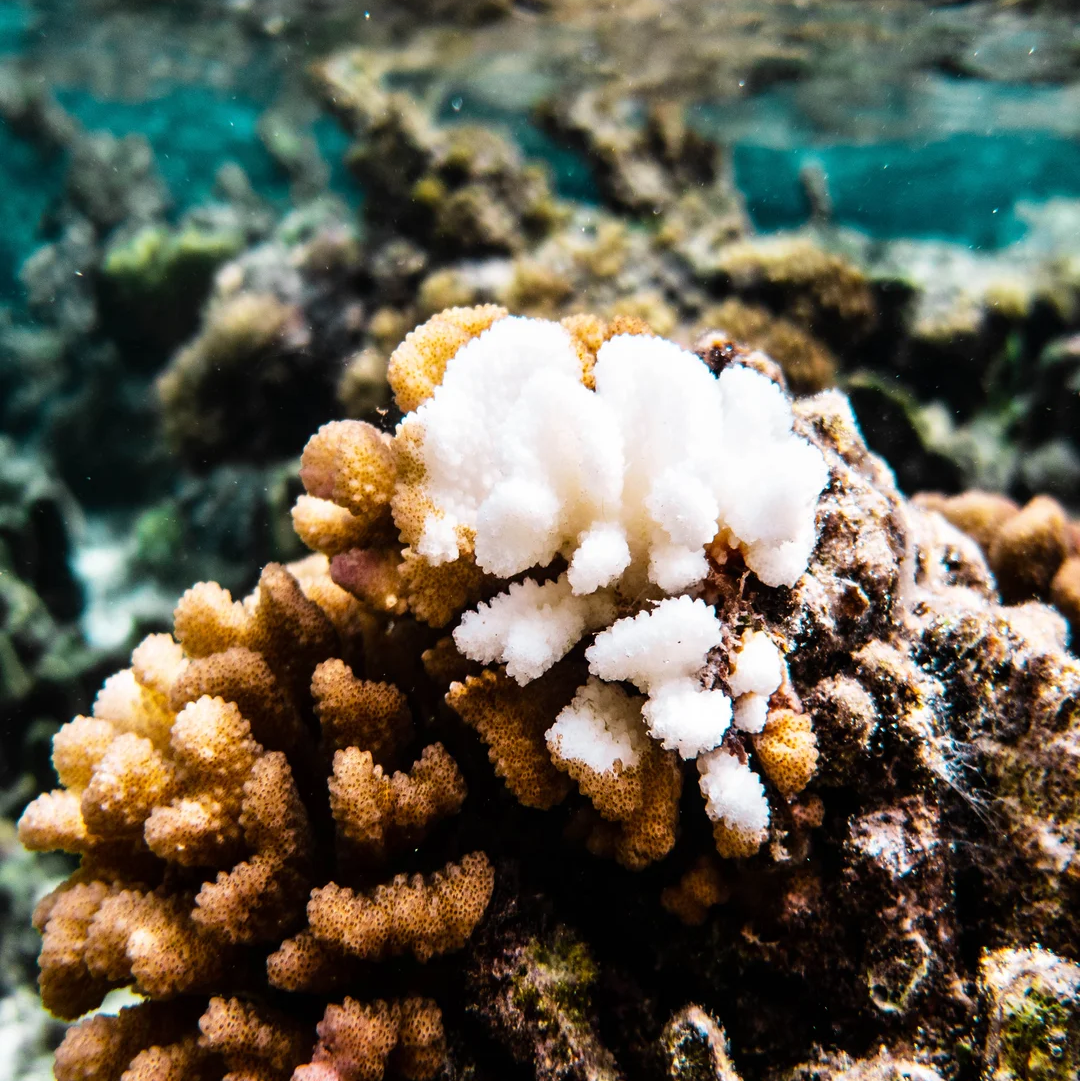The urgent need for innovative solutions

CORAL REEFS ARE DYING
Coral reefs represent 30% of oceans' biodiversity while covering less than 0.1% of their surface. The disturbances they suffer (impacts of climate change, direct anthropogenic impacts) are such that 90% of these ecosystems could have disappeared by 2050. Beyond their extraordinary biodiversity, their services to 850 million people are threatened. These services (e.g., coastal protection, food resources, income from tourism, carbon sequestration) are estimated at more than 10 billion US dollars per year worldwide.

VISUAL ASSESSMENT IS NO LONGER ENOUGH
The creation of Reef Pulse was motivated by the need to propose new monitoring methods for coral reefs to cope with the challenges of their conservation and the threats they face.
While visual monitoring lasts less than 2 hours, we propose continuously monitoring each site for at least 24 hours and strongly encourage long-term continuous monitoring. In addition, routine visual surveys are estimated to consider less than 5% of the species at a site. Monitoring the activity of the remaining 95% of species is critical.
Passive acoustics is currently the only method able to monitor ecosystem functioning continuously. The ecoacoustic approach also enables the evaluation of habitat state and biological diversity. Nonetheless, other innovative ways can advantageously complete passive acoustics to evaluate these aspects. Passive acoustic monitoring can be combined with imagery methods such as photogrammetry, hyperspectral, or multispectral imagery to estimate habitat characteristics finely. It is also possible to combine passive acoustics with inventory methods, such as environmental DNA metabarcoding, to assess the diversity of species present, from micro to macro.
Improving monitoring methods is an absolute necessity, but it must go together with developing efficient restoration methods, which can provide rapid and concrete responses to the diagnoses made. Ecological engineering solutions, such as artificial reef implantation or species reintroduction, have been developed for many years. These solutions will be rapidly improved and diversified to respond to conservation emergencies. Passive acoustic monitoring can be a simple and quick solution to measure the effectiveness of the restoration solutions implemented.

Resilient ecosystems
Despite the numerous disturbances they face (e.g., ocean warming, pollution), some coral reefs are exceptionally resilient.
Continuous acoustic monitoring of these resilient ecosystems is essential to understand the ecological mechanisms that allow these reefs to recover after disturbances. With ecological engineering, it could be possible to promote the implementation of the same mechanisms on less resilient sites.
